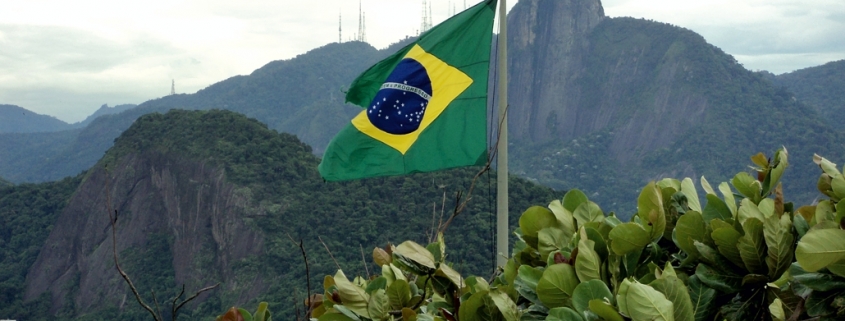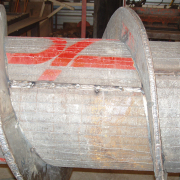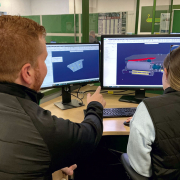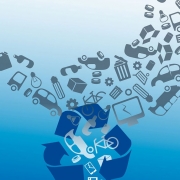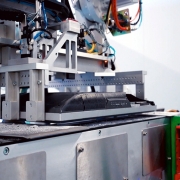Brazil: Challenges for the Future
Brazil, the biggest country in Latin America, generates nearly 80 million tons of solid waste every year. Concerning selective waste collection and recycling, there is still plenty of room for improvement.
In 2018, 79 million tons of urban solid waste were produced in the country, Empresa Brasil de Comunicação (EBC), a Brazilian public company to manage the federal government’s broadcast network, reported in November last year. The waste generation increased by less than one percent compared to the previous year. Of this total, 92 percent (72.7 million tons) was collected – up 1.66 percent against 2017; 6.3 million tons of waste remained uncollected across the cities. The figures came from the outlook of the Brazilian Association of Public Cleaning and Special Waste Companies (Abrelpe), the communication company pointed out.
According to the information, in comparison to all Latin American countries, Brazil accounts for 40 percent of the total generated waste in the region (541,000 tons a day, as per UN Environment). “The numbers listed in the outlook bring Brazil to a position considerably below other countries with the same income level. Our deficit is significant and we really need urgent measures not just to redress it, but to advance towards better management practices for solid waste”, Abrelpe President Carlos Silva Filho was quoted. Estimates based on the time series showed that the country would reach a generation of 100 million tons a year around 2030. Because of the projected quantity of waste, sorting the materials out appropriately – as well as recycling and recovery – were not on a par with this growth, he warned.
As reported, one out of every 12 Brazilians have no regular waste collection service at their doorstep, due to – for example – a lack of funding; many municipalities are indebted and cannot afford these activities. Furthermore, there is a lack of awareness in society about the importance of the appropriate management of solid waste in protecting the environment and preventing diseases. According to Abrelpe, the same applies to selective waste collection and recycling rates, which are rather low. While the world would talk about circular economy and more advanced ways to sort and reuse garbage – the association’s argument is cited – the country still has landfills in every region and needs to tackle a behavior problem among the population, as the Brazilians had still to learn how to dispose of trash and separate the recyclable waste.
Stark contrasts
The waste generation in Brazil seems to stagnate. In 2015, over 207 million Brazilians generated a waste volume of 79.9 million tons (1.7 percent more solid waste than in the previous year), the report “Municipal solid waste in Brazil: A review” stated in 2017. As described, of the collected amount 58.7 percent was appropriately disposed of in sanitary landfills, while 41.3 percent (or nearly 30 million tons) ended in controlled landfills or open dumps.
At that time, the percentage of recyclable materials was low, compared to developed countries, the authors (Raquel Greice de Souza Marotta Alfaia, Alyne Moraes Costa and Juacyara Carbonelli Campos) explained in the report. There was a local difference concerning the physical composition of MSW (municipal solid waste) in towns, which reflected the respective economic power of the region. According to various studies, the highest number of recyclables (41.7 percent) was found in the South-East, followed by the Mid-West (29.72 percent), the North (27.46 percent), the South (26.87 percent) and the North-East (10.31 percent).
The waste material generated in the highest proportion in all these towns corresponded to organic matter (51.4 to 57.27 percent). In this context, the authors noted that in Brazil annually around 41,000 tons of food became waste in Brazilian towns and cities, referring to information from EBC in 2016. “As a stark contrast, millions of Brazilians live in extreme poverty; in other words, a great many people have a monthly income of less than 24 US-Dollar, and they need help from the Brazilian government to guarantee their access to food.”
Recycling activities
As reported by the online publication “RioOnWatch” in 2019, 1,055 Brazilian cities had a recycling program. The country recycles one percent of its waste, the publication “The Brazilian Report” informed in July last year.
In 2015, the country recycled 602,000 tons of aluminum, the Brazilian Aluminum Association (ABAL) informs on its homepage. The relationship between this volume and the domestic consumption of aluminum would indicate a percentage of 38.5, “which exceeds the world average of 27.1 percent (2014 basis)”. Of this total, 292,500 tons referred to scrap from aluminum beverage cans that corresponded to 97.9 percent of the total packaging consumed in 2015, “a figure that has placed Brazil in the best positions of the world since 2001”.
As stated by Alfaia, Costa and Campos, plastic recycling in Brazil is mainly related to polyethylene terephthalate (PET) bottles, “which are abundant in the rubbish generated in Brazilian cities, and there are many waste pickers who work in the separation of this type of recyclable material”. Some years ago, according to the information, about 51 percent of this material was recycled in Brazil. While 314,000 tons of PET had been recycled in 2014, one year later this figure decreased to 274,000 tons. “The drop can be attributed to low economic activity (falling demand) and a large reduction in oil prices”, the authors wrote, referring to Abipet, the Brazilian Pet Industry Association. Also, activities in important sectors such as textiles, chemicals, the automotive industry and transportation had dropped almost 50 percent, reflecting negatively on recycling, since these industries were large consumers of raw recycled materials.
About paper recycling, the country recorded a recovery rate of 63.4 percent in 2015, corresponding to a growth of approximately four percent to the previous year; 61 percent of the paper consumed in Brazil (9.6 million tons) were recycled. This percentage had to be seen concerning the increase in the volume recovered as well as to the reduction in paper consumption, mainly printing and writing paper, the authors of the report “Municipal solid waste in Brazil” wrote. Paper consumption had been declining since 2011, culminating in a reduction of 19.7 percent in 2015 compared to 2014.
The Brazilian economy
The Brazilian economy is negatively affected by the coronavirus – as is happening also in other countries of the world. The country was hit by this situation at a time when the recovery from the 2015-2016 recession was weak and economic growth achieved only 1.1 percent in 2019. “On the assumption that the reform agenda continues to advance, growth is projected to gain momentum in 2020”, the OECD (Organization for Economic Co-operation and Development) wrote in November 2019 on its homepage. “However, high unemployment is falling only slowly and newly created jobs are of low quality, including many informal jobs.”
Covid-19 acts as a brake on economic development: According to news agency Reuters, referring to The World Bank, Brazil’s economy could shrink this year by 5.0 percent due to the direct and indirect economic impact of the coronavirus pandemic. As reported, the country faces three major shocks: weak global demand, low oil prices and the economic disruption from domestic virus-containment measures. “These shocks will reduce private consumption and may impact labor productivity, while unemployment is expected to rise. The global and domestic demand shock (will prompt) a significant drop in investment,” World Bank’s report “The Economy In The Time Of Covid-19” was quoted.
However, FocusEconomics, a provider of economic analysis and forecasts for 130 countries, estimates that the economy will strengthen, supported by low-interest rates and the government’s reform agenda. “Delayed reforms and a prolonged Covid-19 pandemic cloud the outlook”, the analysts expect. In April this year, they projected a growth of 1.9 percent in 2020. “In 2021, growth is seen accelerating to 2.4 percent”, the interested reader could learn.
Investment opportunities
According to the Brazilian official guide on investment opportunities, there is a “wide range of government-sponsored public projects inviting investor support and participation”. As underlined, the guide aims to support the decision-making of investors, featuring trustworthy, systematic and high-level information on selected projects, enhancing the establishment of transparent and consistent dialogue channels between public and private actors, which are of high relevance for the success of each undertaking. “The organization of this Guide was implemented by the Brazilian Investment Information Network (RENAI), part of the Ministry of Industry, Foreign Trade and Services (MDIC), the Ministry of Foreign Affairs (MRE), the Brazilian Service of Support for Micro and Small Enterprises (SEBRAE) and the Brazilian Trade and Investment Promotion Agency (APEX-Brasil),” the information says.
(GR22020, Page 20, Photo: bea_marques / Pixabay)

